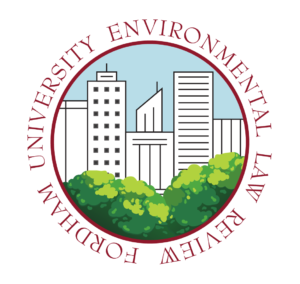“Wizards” and “Prophets” of Environmentalism, and the Potential of Chevron Deference becoming an “Endangered Species.”
Authored by: Adam Bouvier, Fordham ELR Staff Member 2021-22
Edited by: Michael Chambrelli, Fordham ELR Online Editor 2021-22
Several Environmental statutes passed by Congress have the distinction of being recognized as “super statute” laws within statutory analysis circles. The case Tennessee Valley Authority v. Hill is a classic example of a statute (the Endangered Species Act) being passed by Congress with far-reaching policy considerations. For environmental law, super statues include, but are not limited to the Federal Water Pollution Control Act (now known as the Clean Water Act, or CWA), the Clean Air Act (CAA), the Comprehensive Environmental Response, Compensation, and Liability Act (CERCLA), and Resource Conservation and Recovery Act (RCRA), just to name a few.
Another mark of a super statute, separate from their broad purpose, is their delegation of regulation to agencies – both local/municipal, state, and federal. Within environmental statutes, the Environmental Protection Agency (EPA) is obviously the most prominent, though not exclusive. And as conceived under the auspices of the Administrative Procedure Act (APA), judicial review is a cornerstone of exercising the regulatory process.
Yet environmental law as a field is paradigmatically navigating between two ends: welfare and commerce. The “costs and benefits” of regulation over economic interests is a reality which some environmental advocates would no doubt like to supersede with more substantial action.
“Wizards” and “Prophets” of Environmental Regulation:
In Freakonomics Radio, has recently put for a theory to encapsulate the differences between those who advocate for immediate environmental action and those who seek a more gradualist approach for environmental policy. This was broadly defined as the conflict between “wizards” –those who favor community negotiation and technological innovation as being the key to environment progress, and “prophets” –those who advocate drastic action to avert environmental disaster.
A good example of “wizard” implementation within U.S. law is the Small Business Regulatory Enforcement Fairness Act (SBREFA) of 1996. Within the “wizards” school of environmental regulation this accomplishes two goals: (1) it allows regulated entities such as businesses and corporations to participate in the environmental regulatory process, thus ensuring they are offered a chance to reduce adversity in the process; and (2) it keeps environmental regulators “grounded” in the reality of the fields they are regulating, both economically and politically. This environmental regulatory system, if it functions effectively and transparently, can prevent extreme political backlash against environmental regulation from manifesting by giving regulated entities a part in the process and preventing regulating agencies from becoming myopic in their focus.
Is Chevron Deference Endangered?
Though imperfect, this current paradigm allows environmental agencies to regulate within judicial oversight under Chevron deference, allowing the environmental regulatory process to proceed. However, Gutierrez-Brizuela v. Lynch indicate that more-conservative leaning courts are less likely to endorse Chevron deference of agency action.
It seems more likely that the current conservative leanings of the Supreme Court, may endanger the Chevron deference doctrine. It’s becoming easier to forecast a future divided Court over-ruling Chevron and throwing much of the environmental regulatory process into chaos. However, it remains likely that any Justice would be hesitant to do this, due to the relative stability of judicial review over the regulatory process, and the reality that every “controversial” decision the Court makes increased calls for Supreme Court reform.
It is therefore imperative to urge caution from the “prophets” of environmental regulation. If Chevron was over-turned it would likely instigate considerable lawsuits against environmental regulation at every level. The consequence of the end of Chevron deference would open the floodgates to legal challenges to many agency actions that would be considered routine today. It would be great business for lawyers, but ultimately bad for the public’s health and welfare and the overall environment. It seems likely that environmental regulations pushing too hard on the “Overton Window” would be a scenario where the majority of the Court could become more inclined consider overturning Chevron.
Today, the goals that activists for environmental regulation seek to implement are potentially revolutionary in terms of their effect on commerce and a person’s everyday life. These include further regulation of fossil fuel industries (with the goal of making them cost-prohibitive), and further regulation of the meat industry to make people more inclined to vegan and go “beyond meat,” to only name a few.
In March of this year, Secretary of Transportation Buttigieg briefly discussed, and then backtracked, taxing the miles people drive on their vehicles. As illustrated from the context of the last example, absent a change in the Congressional paradigm, most of these environmental reforms are likely to manifest through some form of agency regulation.
Whether the designs of “prophets” or “wizards,” much of what is achieved within today’s environmental regulation is functional due to the system of Chevron deference. While much more reform is needed, it is also necessary to work deliberately with full knowledge of the complexity facing effective environmental regulation. To tread too far could cause a significant judicial backlash and further antagonize our current partisan paradigm.

